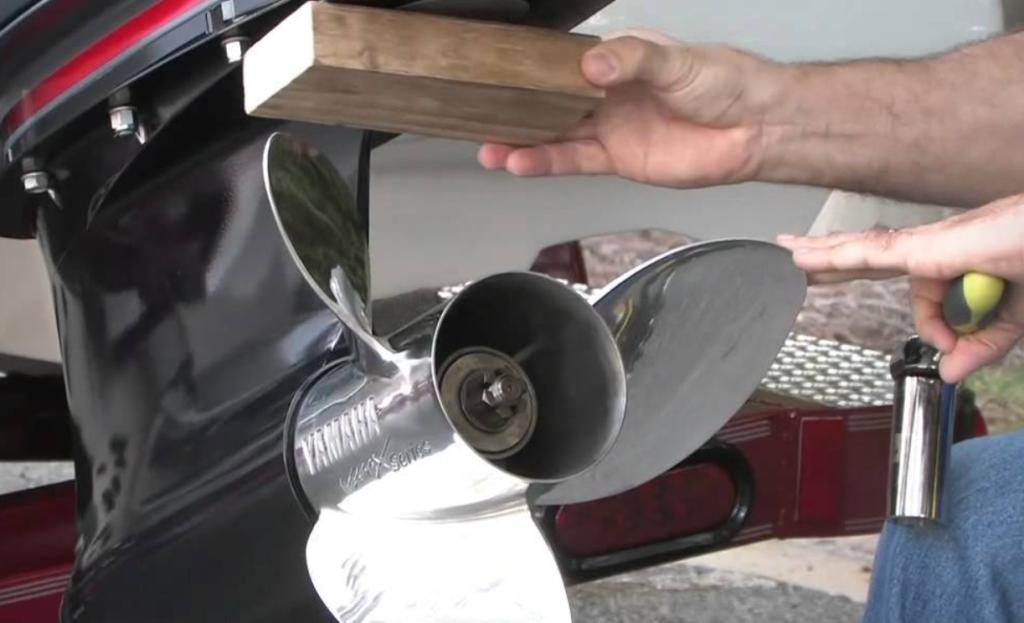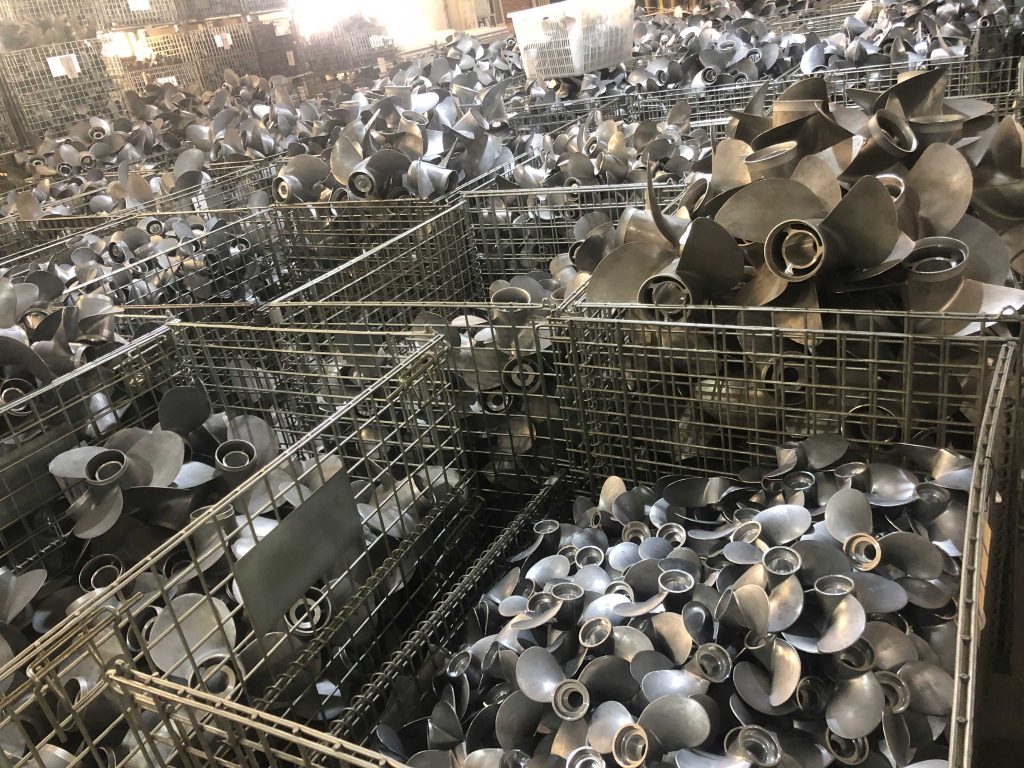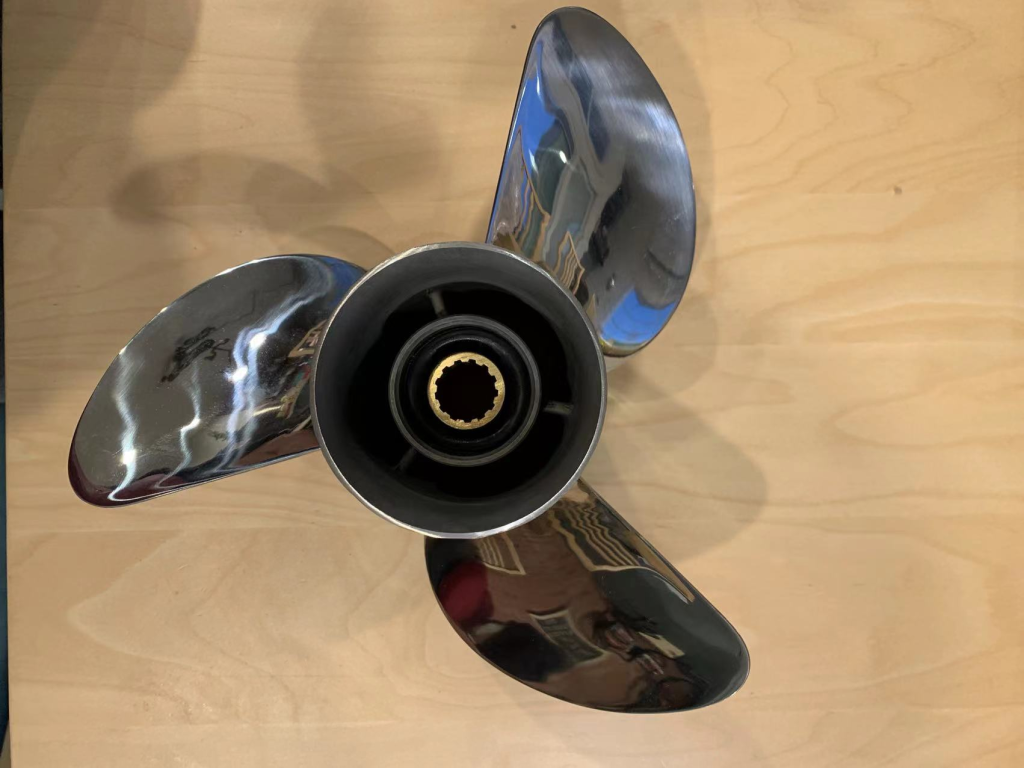When was the last time you really checked your propeller thoroughly?, have you noticed a drop off in speed?, does your boat vibrate more than it used to?Does it use more fuel?Chances are that most boat owners will have experienced one or more of these symptoms at some time, if so the following tips could save you money and make your boating a more pleasurable experience.

To prevent fouling of a boat propeller, you can follow these tips:
Regular maintenance: Clean and inspect the propeller regularly to remove any debris or marine growth. This will help ensure optimal performance and reduce the chances of fouling.
Use antifouling paint: Apply antifouling paint on the propeller and other submerged parts of the boat. This paint contains biocides that discourage the growth of marine organisms, preventing fouling.
Install a propeller guard: Consider installing a propeller guard or cage to protect the propeller from debris and marine life. This can help reduce the risk of fouling and damage to the propeller.
Avoid shallow or weedy areas: Be cautious when navigating in shallow or weedy areas, as these are more likely to cause fouling. Try to steer clear of such locations or use caution when passing through them.
Trim the motor: Adjust the motor trim to raise the propeller higher in the water. This can help reduce the risk of encountering debris or marine growth that may cause fouling.
Clean the hull: Keep the boat’s hull clean by regularly removing any accumulated marine growth or barnacles. This will minimize the transfer of fouling organisms to the propeller.
Avoid stagnant water: Try to avoid areas with stagnant water, as these are more likely to have a higher concentration of marine growth. Opt for areas with good water circulation to help prevent fouling.
Consider alternative propulsion systems: Some boats, especially those used in shallow waters, may benefit from alternative propulsion systems such as jet drives or surface-piercing propellers. These systems have fewer exposed parts that are prone to fouling.
Remember, prevention is key when it comes to fouling. By taking these preventive measures, you can reduce the chances of fouling and keep your boat’s propeller in good condition.

The first step is to visually inspect the propeller for any noticeable signs of damage, such as large dents, severe bends, missing pieces, or even missing blades.
If any of these issues are present, it is important to address them as the propeller requires repair. Next, carefully run your fingers along the propeller blades, paying close attention to the leading edge. The blade should feel smooth, without any burrs, missing pieces, or bends.
Even minimal damage signifies that the propeller has come into contact with a submerged object. It is crucial to note that any form of damage, regardless of its size, affects the propeller’s performance. Let’s explore the two main ways damage impacts the propeller’s functionality. Firstly, if we consider the propeller as a wheel, any damage affects its dynamic balance, similar to a car with imbalanced wheels.
To understand the significance of this, observe the small balance weights on your car in comparison to the wheel size. Secondly, damage greatly impacts the propeller’s hydrodynamic qualities.
People often forget that the propeller blades essentially act as small wings, spinning at high speeds of up to three or four thousand RPM. At these speeds, the water flowing over the blades moves extremely fast. Therefore, even slight damage has a significant effect on water flow, reducing overall efficiency. If you discover any damage, it is advisable to have it repaired by professionals. DIY repairs are rarely successful and often result in irreparable damage caused by inexperienced handling of tools like grinders.

To carry out regular maintenance of a ship propeller, follow these steps:
Gather the necessary tools and equipment: You will need a dive suit or access to a dry dock, a brush or scraper, a wire brush or abrasive pad, a soft cloth or sponge, a propeller wrench or spanner, and a lubricant or anti-seize compound.
Inspect the propeller: Before cleaning, visually inspect the propeller for any signs of damage, such as dents or cracks. Check for any fishing lines, ropes, or debris that may be wrapped around the propeller.
Remove debris: Use a brush or scraper to remove any debris or marine growth that has accumulated on the propeller blades, hub, and shaft. Be thorough in removing all the material to ensure optimal performance.
Clean the propeller: Use a wire brush or abrasive pad to clean the propeller surfaces. Remove any remaining marine growth, barnacles, or stubborn deposits. Be careful not to damage the propeller blades or paint.
Rinse with water: Rinse the propeller with clean water to remove any loose debris or cleaning agents. This will also help prevent corrosion.
Inspect for damage: After cleaning, inspect the propeller again for any signs of damage that may have been hidden by the fouling. Pay close attention to the blades, hub, and shaft.
Lubricate or apply anti-seize compound: Apply a thin layer of lubricant or anti-seize compound to the propeller shaft and any other moving parts. This will help prevent corrosion and facilitate smooth operation.
Tighten propeller nuts: If necessary, use a propeller wrench or spanner to ensure that the propeller nuts are properly tightened. Follow the manufacturer’s guidelines for the appropriate torque specifications.
Document maintenance: Keep a record of the date and details of the propeller maintenance. This will help you track the maintenance schedule and identify any recurring issues.
Consider professional inspections: Periodically, it may be beneficial to have a professional inspection of the propeller. They can provide a more thorough assessment and identify any potential issues that may require attention.
By following these steps and conducting regular maintenance, you can ensure that your ship’s propeller remains in good condition, optimizing its performance and longevity.
When inspecting propellers,there are several precautions to be aware of:
Safety first: Always ensure that the engine is turned off and the propeller is stationary before starting the inspection. This will prevent any accidental injuries.
Use proper protective gear: Wear gloves and safety glasses to protect yourself from any sharp edges or debris that may be present on the propeller.
Check for cracks or damage: Inspect the entire surface of the propeller for any visible cracks, dents, or other forms of damage. Pay particular attention to the leading edge, as this area is most susceptible to damage.
Look for signs of wear: Check for signs of wear, such as erosion or pitting, especially on metal propellers. These can affect the performance and efficiency of the propeller.
Check for loose or missing parts: Ensure that all bolts, nuts, and other fasteners are securely tightened. Look for any missing or loose parts that may need to be replaced.
Inspect the hub: Examine the hub for any signs of damage or wear. Make sure it is securely attached to the propeller shaft.
Seek professional help if needed: If you are unsure about any aspect of the propeller inspection or if you notice any significant damage or wear, it is recommended to seek professional assistance. They will have the expertise to properly assess and repair any issues.
Remember, a well-maintained propeller is crucial for the safe and efficient operation of your boat. Regular inspections and maintenance will help ensure optimal performance and longevity.

Conclusion about How best to prevent fouling of a boat propeller
Ship propeller maintenance is crucial forseveral reasons. Firstly, regular maintenance helps to ensure the propeller’s optimal performance, which directly impacts the vessel’s speed, fuel efficiency, and maneuverability. Proper maintenance also helps to prevent issues such as cavitation, erosion, and corrosion, which can significantly reduce the propeller’s lifespan. Additionally, maintaining the propeller is essential for maintaining the overall balance and alignment of the ship’s propulsion system, which is crucial for safe and smooth navigation. Regular inspections and cleaning are recommended to remove any fouling or debris that can negatively affect the propeller’s performance. Overall, proper maintenance of ship propellers is essential for maximizing efficiency, reducing operating costs, and ensuring the safe operation of the vessel.


